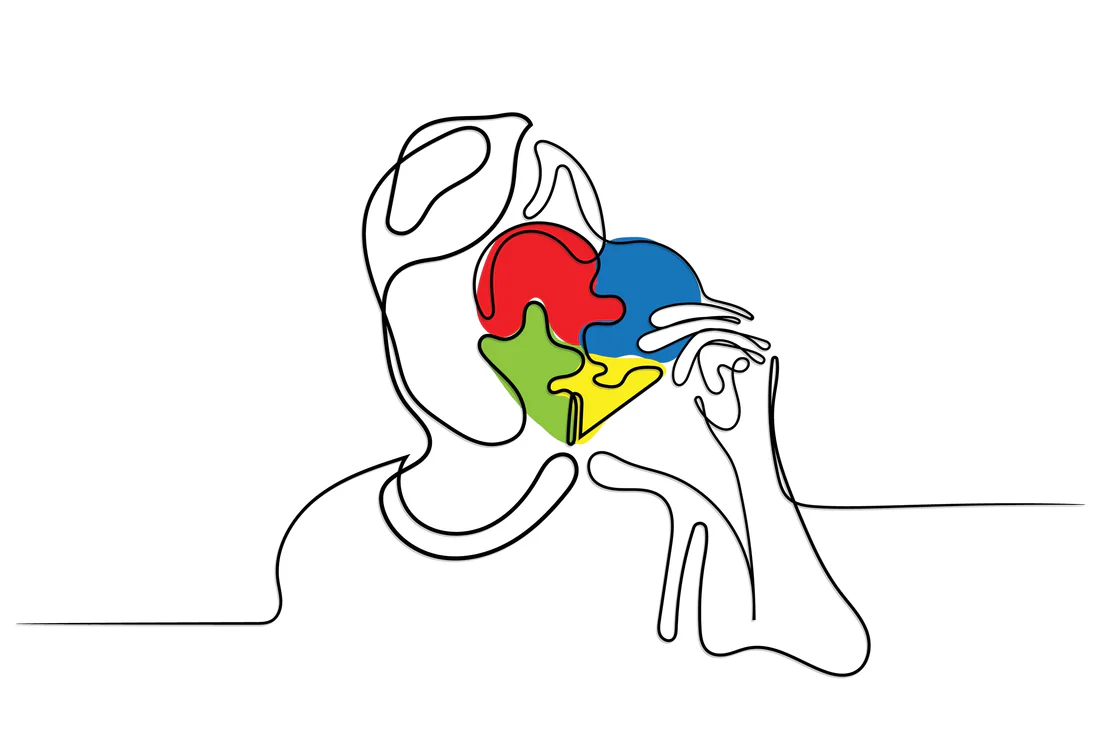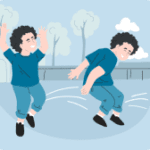Orthopedic, Mobility, & Post-Surgical Rehab
- Knee Surgery & ACL Rehab: Find Therapy After Knee Replacement
- Post-Shoulder Surgery Rehab: Rotator Cuff & Labral Repair Recovery
- Post-Hip Replacement Rehab: Recovery & Therapy
- Back Surgery Rehab & Recovery Therapy | Expert Rehab Plans
- Frozen Shoulder Adhesive Capsulitis Rehab
- Tendonitis Rehab & Treatment | Achilles, Patellar & Rotator Cuff Tendonitis Therapy
- Low Back Pain Rehab & Therapy | Expert Treatment & Recovery
- Sciatica Pain Relief & Rehab Therapy | Find Trusted Sciatica Specialists
- Neck Pain: Causes, Treatment & Therapists Near You
- Chronic Pain & Fibromyalgia: Causes, Relief & Therapy
- Torticollis in Babies & Adults: Causes, Symptoms & Therapy
- Toe Walking in Children: Causes, Therapy Options & When to Worry
- Scoliosis in Children and Teens: Symptoms, Treatment & Therapy Support
Back Surgery Rehab & Recovery Therapy | Expert Rehab Plans

Authored by: The DrSensory Editorial Team
Reviewed by: 🛡️ DrSensory Clinical Review Board – Doctor of Therapy Rehab Division
Last updated: June 2025
Back Surgery Rehab: Recovery & Therapy Guide
Back surgery, whether for herniated discs, spinal fusion, or laminectomy, is only the first step. What truly defines your long-term success is how you recover—through smart, guided rehabilitation.
At DrSensory, we help you understand every step of post-back surgery recovery, and connect you with experienced physical therapists who specialize in spine rehabilitation.
Why Rehab After Back Surgery Is Crucial
Rehabilitation is not optional—it’s essential. After surgery, muscles weaken, mobility decreases, and your spine needs structured support to heal properly. Without rehab, you risk poor healing, chronic pain, or re-injury.
Top Benefits of Post-Surgery Rehab:
- Faster return to daily activities
- Reduced pain and inflammation
- Restored posture and mobility
- Prevention of scar tissue buildup
- Personalized spine strengthening
Types of Back Surgery & What Rehab Involves
Spinal Fusion Rehab
Recovery focuses on gentle movement and core strengthening. Patients avoid bending, twisting, or lifting during early healing. Gradual exercise is introduced by week 4.
Discectomy Rehab
Usually a quicker recovery. Rehab begins early to regain lumbar flexibility and core stability. Walking is encouraged within 24 hours post-op.
Laminectomy Rehab
Focused on rebuilding spinal support muscles and restoring range of motion. Water therapy or guided stretching may be introduced after 2–3 weeks.
Stages of Back Surgery Recovery Therapy
Phase 1: Immediate Post-Op (Week 0–2)
- Rest, walking, and gentle movement
- Pain management and incision care
- Avoid sitting too long
Phase 2: Early Rehab (Week 2–6)
- Supervised physical therapy begins
- Core and glute activation exercises
- Light stretches and walking routines
Phase 3: Progressive Strengthening (Week 6–12)
- Resistance training for posture muscles
- Ergonomic training for lifting/movement
- Balance and stability work
Phase 4: Return to Activity (3 Months+)
- Low-impact sports like swimming or cycling
- Functional movement assessments
- Long-term home exercise plans
Therapies That Work Best After Back Surgery
- Manual Therapy: Reduces tension and improves mobility
- Neuromuscular Re-education: Retrains your body to move safely
- Core Stabilization Exercises: Strengthens the spine from within
- Aquatic Therapy: Eases movement while reducing stress on joints
- Postural Training: Teaches proper sitting, standing, and lifting form
👉 Looking for a rehab specialist? Use DrSensory to match with therapists experienced in spine recovery.
How to Find the Right Therapist for Back Surgery Rehab
At DrSensory, we make it easy:
- Search by surgery type (e.g., spinal fusion)
- Filter by specialty (e.g., spine care, pain management)
- Read verified reviews
- Book directly online
Signs of Complications After Back Surgery: What to Watch For
Back surgery is a major procedure, and while most patients recover smoothly with proper rehab, it’s crucial to recognize early warning signs of complications. Promptly identifying these symptoms can prevent serious issues and ensure you get the right care when you need it most.
Early Warning Symptoms of Back Surgery Complications
Watch for these common signs that may indicate a complication after your back surgery:
- Severe or worsening pain that doesn’t improve with medication or rest
- Redness, swelling, or drainage around the surgical incision, which may signal infection
- Fever or chills lasting more than 24 hours post-op
- Numbness, tingling, or weakness in your legs or feet
- Loss of bladder or bowel control, which is a medical emergency
- Sudden swelling or warmth in the legs, possibly indicating a blood clot
If you experience any of these symptoms, it’s essential to contact your doctor immediately for evaluation.
When to Contact Your Doctor During Back Surgery Recovery
- Persistent or worsening pain unrelieved by prescribed meds
- Signs of infection such as fever, redness, or pus at the incision site
- New or worsening neurological symptoms (numbness, weakness)
- Difficulty walking or standing
- Any unusual or severe symptoms that concern you
Don’t hesitate to reach out—even if you’re unsure. Early intervention can prevent minor issues from becoming major problems.
How Rehab Helps Prevent Post-Surgery Complications
A structured rehabilitation program is key to minimizing risks after back surgery. Here’s how:
- Improves blood circulation, reducing the chance of blood clots
- Restores mobility and strength, helping you regain normal function safely
- Encourages proper wound healing through guided activity and monitoring
- Educates patients on safe movement and posture to avoid injury or re-injury
- Monitors pain and progress, enabling timely adjustments to your recovery plan
At DrSensory, we connect you with expert physical therapists who specialize in back surgery rehab, ensuring you receive personalized care that supports a safe, effective recovery.
Frequently Asked Questions (FAQ)
How long does it take to fully recover from back surgery?
Recovery time varies by surgery type, but most patients see significant improvement within 6–12 weeks, with full recovery often taking 3–6 months. Rehab can speed up this process.
When should I start physical therapy after back surgery?
In most cases, therapy starts within 1–2 weeks post-op, once cleared by your surgeon. Walking may begin within 24 hours, while active therapy usually begins in the second week.
What exercises should I avoid after back surgery?
Avoid:
- Heavy lifting
- Twisting or bending
- High-impact activities (e.g., running)
- Any unsupervised exercises without medical clearance
What should I expect during my first physical therapy session after back surgery?
Your therapist will evaluate your mobility, pain level, and surgical site. They’ll guide you through safe exercises tailored to your recovery stage.
Can I travel during back surgery rehab?
Short trips are possible if approved by your doctor. Always plan to maintain your therapy routine and avoid prolonged sitting.
How often should I attend therapy sessions after back surgery?
Typically, 2–3 times per week initially, tapering as you progress. Your therapist will customize frequency based on your recovery.
Are there alternative therapies for back surgery rehab?
Some patients benefit from acupuncture, chiropractic care, or massage, but these should complement—not replace—physical therapy and be discussed with your surgeon.
Can I do rehab at home?
Yes, home exercises are part of many rehab plans—but initial sessions should be guided by a licensed physical therapist to avoid injury and ensure proper healing.
Can I prevent future back problems after surgery?
Yes. Long-term rehab, ergonomic adjustments, regular exercise, and healthy lifestyle choices help maintain spine health and reduce re-injury risk.
Is aquatic therapy good after back surgery?
Absolutely. Water therapy reduces stress on the spine and allows safe movement, especially during the early rehab phases. It’s particularly helpful after spinal fusions or laminectomies.
How do I know if my rehab is working?
You should notice:
- Less pain
- Better posture and movement
- Improved strength and stamina
If you’re not progressing, consult your therapist or surgeon.
How can DrSensory help with back surgery rehab?
DrSensory connects you with:
- Certified physical therapists near you
- Specialists in spine and post-surgical rehab
- Therapists offering in-home, in-clinic, or virtual sessions
This page provides general educational content and is not a substitute for professional medical advice. Always consult a licensed provider for diagnosis and treatment.
View privacy policy, copyright and trust info
More on Orthopedic, Mobility, & Post-Surgical Rehab

- Knee Surgery & ACL Rehab: Find Therapy After Knee Replacement
- Post-Shoulder Surgery Rehab: Rotator Cuff & Labral Repair Recovery
- Post-Hip Replacement Rehab: Recovery & Therapy
- Back Surgery Rehab & Recovery Therapy | Expert Rehab Plans
- Frozen Shoulder Adhesive Capsulitis Rehab
- Tendonitis Rehab & Treatment | Achilles, Patellar & Rotator Cuff Tendonitis Therapy
- Low Back Pain Rehab & Therapy | Expert Treatment & Recovery
- Sciatica Pain Relief & Rehab Therapy | Find Trusted Sciatica Specialists
- Neck Pain: Causes, Treatment & Therapists Near You
- Chronic Pain & Fibromyalgia: Causes, Relief & Therapy
- Torticollis in Babies & Adults: Causes, Symptoms & Therapy
- Toe Walking in Children: Causes, Therapy Options & When to Worry
- Scoliosis in Children and Teens: Symptoms, Treatment & Therapy Support
Find a Therapist near you
Are you looking for a physical, occupational, or speech therapist in your area?
Look no further than the DrSensory Therapist Database and Clinic Directory!
Find a Therapist
Find the physical therapist, occupational therapist, or speech language pathologist you’re looking for!
Ask Us Anything
Whether you are looking for advice, have a general question about sensory processing, or looking for resources.
Submit Your Story
Share your story about your child. Let’s celebrate milestones and learn more about challenges.








































 Speech Therapy
Speech Therapy Physical Therapy
Physical Therapy Occupational Therapy
Occupational Therapy




